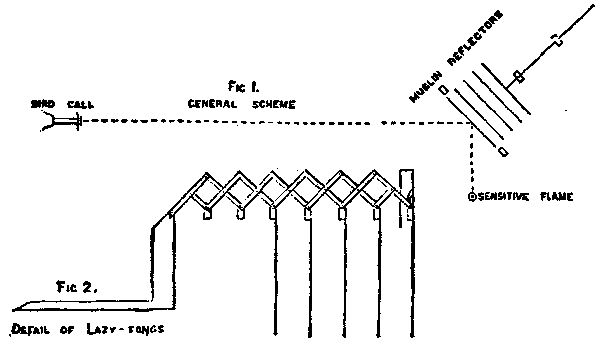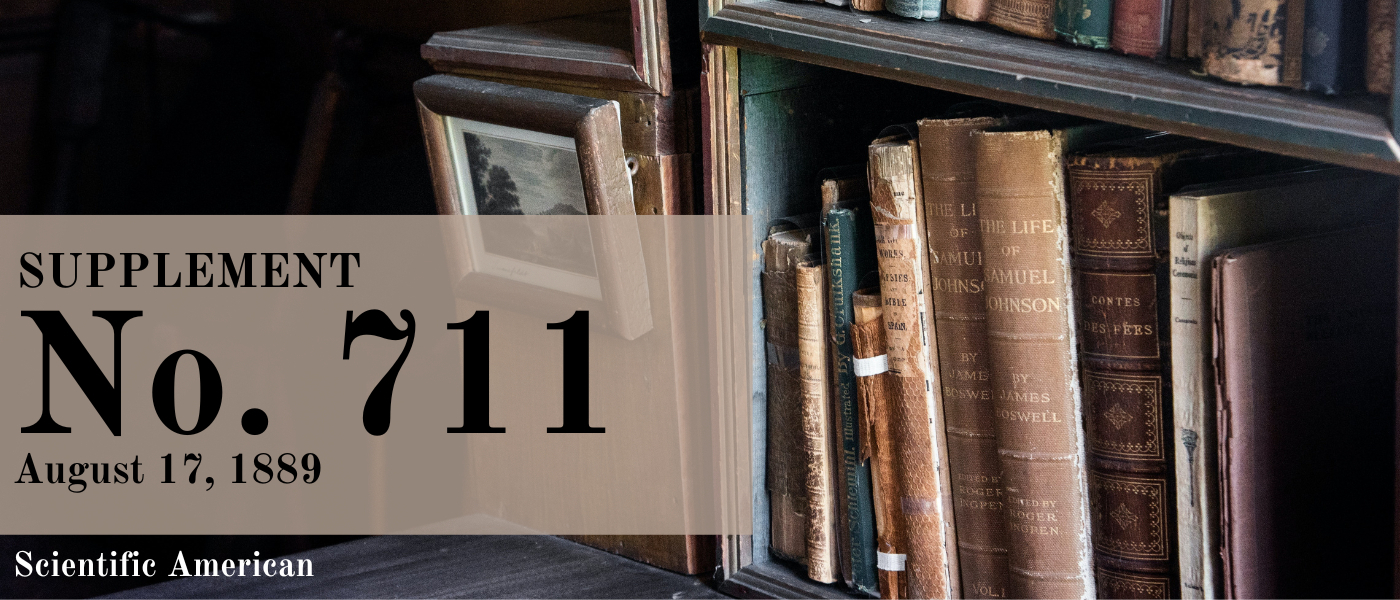Scientific American Supplement, No. 711, August 17, 1889, by Various, is part of the HackerNoon Books Series. You can jump to any chapter in this book here. IRIDESCENT CRYSTALS
IRIDESCENT CRYSTALS.
By Lord Rayleigh.
The principal subject of the lecture is the peculiar colored reflection observed in certain specimens of chlorate of potash. Reflection implies a high degree of discontinuity. In some cases, as in decomposed glass, and probably in opals, the discontinuity is due to the interposition of layers of air; but, as was proved by Stokes, in the case of chlorate crystals the discontinuity is that known as twinning. The seat of the color is a very thin layer in the interior of the crystal and parallel to its faces.
The following laws were discovered by Stokes:
(1) If one of the crystalline plates be turned round in its own plane, without alteration of the angle of incidence, the peculiar reflection vanishes twice in a revolution, viz., when the plane of incidence coincides with the plane of symmetry of the crystal. [Shown.]
(2) As the angle of incidence is increased, the reflected light becomes brighter and rises in refrangibility. [Shown.]
(3) The colors are not due to absorption, the transmitted light being strictly complementary to the reflected.
(4) The colored light is not polarized. It is produced indifferently, whether the incident light be common light or light polarized in any plane, and is seen whether the reflected light be viewed directly or through a Nicol's prism turned in any way. [Shown.]
(5) The spectrum of the reflected light is frequently found to consist almost entirely of a comparatively narrow band. When the angle of incidence is increased, the band moves in the direction of increasing refrangibility, and at the same time increases rapidly in width. In many cases the reflection appears to be almost total.
Fig. 1 general scheme

In order to project these phenomena a crystal is prepared by cementing a smooth face to a strip of glass whose sides are not quite parallel. The white reflection from the anterior face of the glass can then be separated from the real subject of the experiment.
A very remarkable feature in the reflected light remains to be noticed. If the angle of incidence be small, and if the incident light be polarized in or perpendicularly to the plane of incidence, the reflected light is polarized in the opposite manner. [Shown.]
Similar phenomena, except that the reflection is white, are exhibited by crystals prepared in a manner described by Madan. If the crystal be heated beyond a certain point the peculiar reflection disappears, but returns upon cooling. [Shown.]
In all these cases there can be little doubt that the reflection takes place at twin surfaces, the theory of such reflection (Phil. Mag., Sept., 1888) reproducing with remarkable exactness most of the features above described. In order to explain the vigor and purity of the color reflected in certain crystals, it is necessary to suppose that there are a considerable number of twin surfaces disposed at approximate equal intervals. At each angle of incidence there would be a particular wave length for which the phases of the several reflections are in agreement. The selection of light of a particular wave length would thus take place upon the same principle as in diffraction spectra, and might reach a high degree of perfection.
In illustration of this explanation an acoustical analogue is exhibited. The successive twin planes are imitated by parallel and equidistant disks of muslin (Figs. 1 and 2) stretched upon brass rings and mounted (with the aid of three lazy-tongs arrangements) so that there is but one degree of freedom to move, and that of such a character as to vary the interval between the disks without disturbing their equidistance and parallelism.
The source of sound is a bird call, giving a pure tone of high pitch (inaudible), and the percipient is a high-pressure flame issuing from a burner so oriented that the direct waves are without influence upon the flame (see Nature, xxxviii., 208; Proc. Roy. Inst., January, 1888). But the waves reflected from the muslin arrive in the effective direction, and if of sufficient intensity induce flaring. The experiment consists in showing that the action depends upon the distance between the disks. If the distance be such that the waves reflected from the several disks co-operate,2 the flame flares, but for intermediate adjustments recovers its equilibrium. For full success it is necessary that the reflective power of a single disk be neither too great nor too small. A somewhat open fabric appears suitable.
It was shown by Brewster that certain natural specimens of Iceland spar are traversed by thin twin strata. A convergent beam, reflected at a nearly grazing incidence from the twin planes, depicts upon the screen an arc of light, which is interrupted by a dark spot corresponding to the plane of symmetry. [Shown.] A similar experiment may be made with small rhombs in which twin layers have been developed by mechanical force after the manner of Reusch.
The light reflected from fiery opals has been shown by Crookes to possess in many cases a high degree of purity, rivaling in this respect the reflection from chlorate of potash.
The explanation is to be sought in a periodic stratified structure. But the other features differ widely in the two cases. There is here no semicircular evanescence, as the specimen is rotated in azimuth. On the contrary, the colored light transmitted perpendicularly through a thin plate of opal undergoes no change when the gem is turned round in its own plane. This appears to prove that the alternate states are not related to one another as twin crystals. More probably the alternate strata are of air, as in decomposed glass. The brilliancy of opals is said to be readily affected by atmospheric conditions.
Abstract of the Friday evening lecture delivered by Lord Rayleigh, F.R.S., at the Royal Institution, on April 12, 1889.
If the reflection were perpendicular, the interval between successive disks would be equal to the half wave-length, or to some multiple of this.
About HackerNoon Book Series: We bring you the most important technical, scientific, and insightful public domain books.
This book is part of the public domain. Various (2004). Scientific American Supplement, No. 711, August 17, 1889. Urbana, Illinois: Project Gutenberg. Retrieved https://www.gutenberg.org/cache/epub/16972/pg16972-images.html
This eBook is for the use of anyone anywhere at no cost and with almost no restrictions whatsoever. You may copy it, give it away or re-use it under the terms of the Project Gutenberg License included with this eBook or online at www.gutenberg.org, located at https://www.gutenberg.org/policy/license.html.
